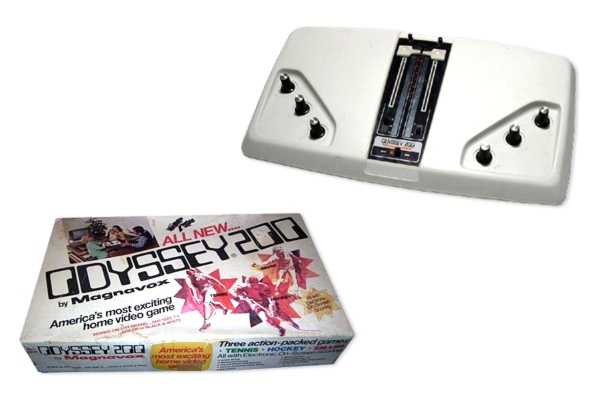
Kildall's third customer, IMSAI, would propel CP/M to pre-eminence among personal computer operating systems for the next seven years.Īs Intel's 8080 began quantity production, MITS capitalized on the interest shown in Jonathan Titus' Mark-8 "source and build it yourself" kit with its own Altair 8800, designed exclusively for the hobbyist and the new wave of computing field college students.Īs Intel's 8080 began quantity production, Ed Roberts, owner of a small company called Micro Instrumentation and Telemetry Systems, or MITS, which originally catered to amateur (ham) radio and model rocketry enthusiasts, looked toward the budding hobbyist computer movement for his company's continued survival. CP/M sales were initially limited to a couple users: Omron Corporation of Japan and Lawrence Livermore Labs.
#1974 magnavox odyssey software#
It wasn't interested in an operating system that ran from disc nor any non-business related software in general. Kildall offered CP/M to Intel for $20,000 and the company declined the offer. By the time MS-DOS debuted, 500,000 computers had shipped with the CP/M operating system, and it could have been many times more had history played out a little differently.
#1974 magnavox odyssey code#
The resulting code from the Intellec-8 system would become CP/M (Control Program for Microcomputers), the dominant operating system for the next seven years until the widespread use of MS-DOS. Kildall accelerated the process by cobbling together a system from an Intellec-8 development kit and a donated floppy drive, which alleviated downtime from lengthy delays associated with the teletype method of data input-output on the DEC time-shared minicomputer. The software, Interp/80, would be complemented by a high-level language mirroring XPL (in use for mainframes at the time) called PL/M. Navy's Postgraduate School, to write software that would emulate a (yet to be built) 8080 system on a DEC PDP-10 minicomputer. in compiler design who taught at the U.S. The remaining parts of the puzzle, an operating system and consumer-friendly packaging, were also taking their first steps. Computers were still seen as an expensive business and research tool, and the markets for a new generation of relatively inexpensive personal machines and industrial controllers didn't exist, nor was it imagined in many cases. The prevailing attitude up until now had centered on the microprocessor having to co-exist with or otherwise usurp the more powerful mainframe and minicomputer. By this time, the potential microprocessor markets had started to present themselves. Without a direct competitor, Intel had a new market mostly to itself, it just needed to find customers with enough imagination to see the possibilities.Initial development of the 8080 didn't start until mid-1972, some six months after Federico Faggin began lobbying Intel's management for its development.

While initial development had been delayed, Intel's primary competitor, Motorola's 6800, also had its share of issues adapting the chip and n-MOS process to a single 5-volt input (the 8080 required three separate voltage inputs), delaying its introduction almost seven months. Company management focused on the high profit memory business, particularly complete memory systems that were compatible with the lucrative mainframe market. Like its predecessor the 8008, Intel's 8080 suffered from initial delays in development but would later be recognized as one of the most influential chips in history.

1974 - 1980: Bootstrapping a New Industry Intel and Motorola's virtual duopoly comes to an abrupt end


 0 kommentar(er)
0 kommentar(er)
